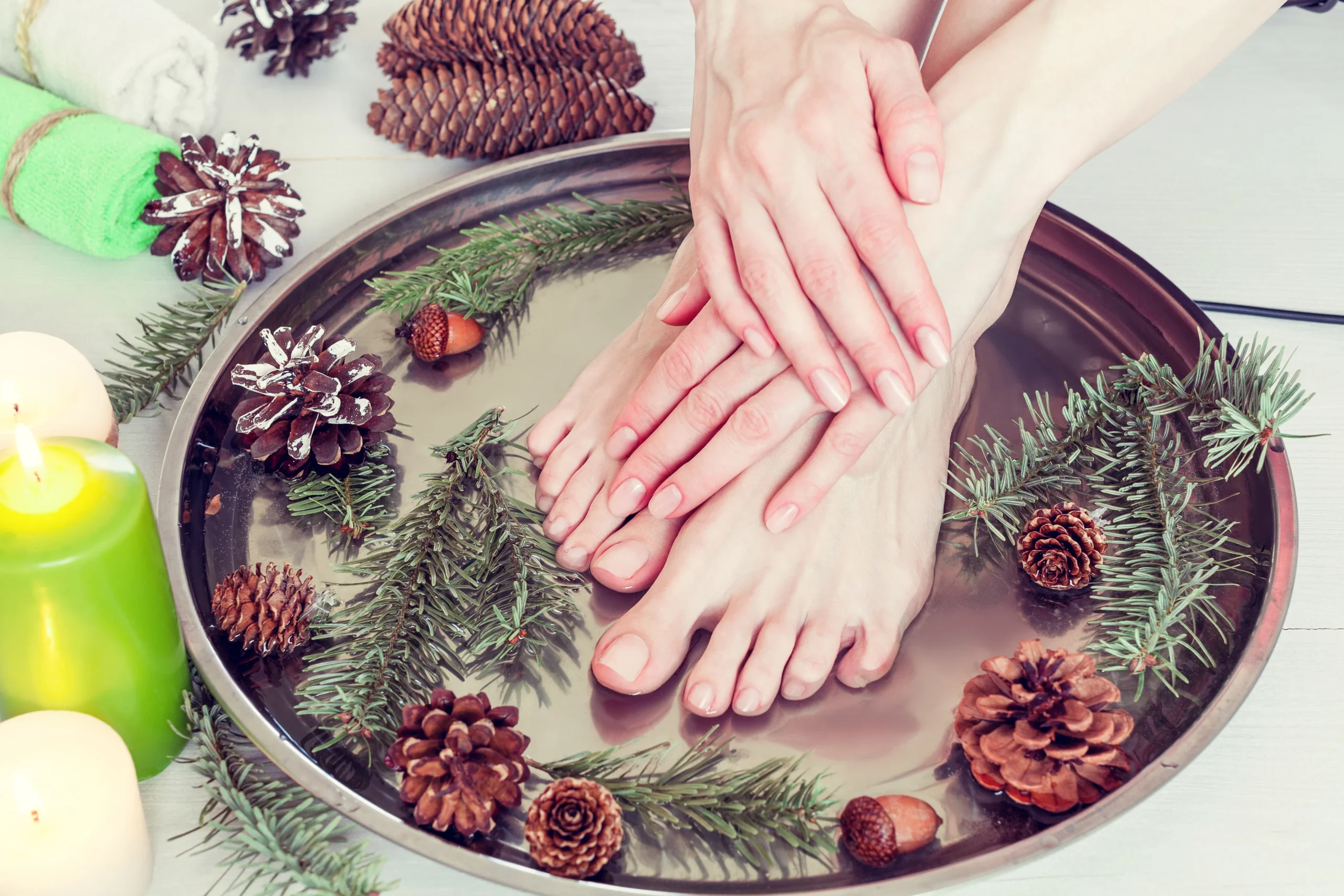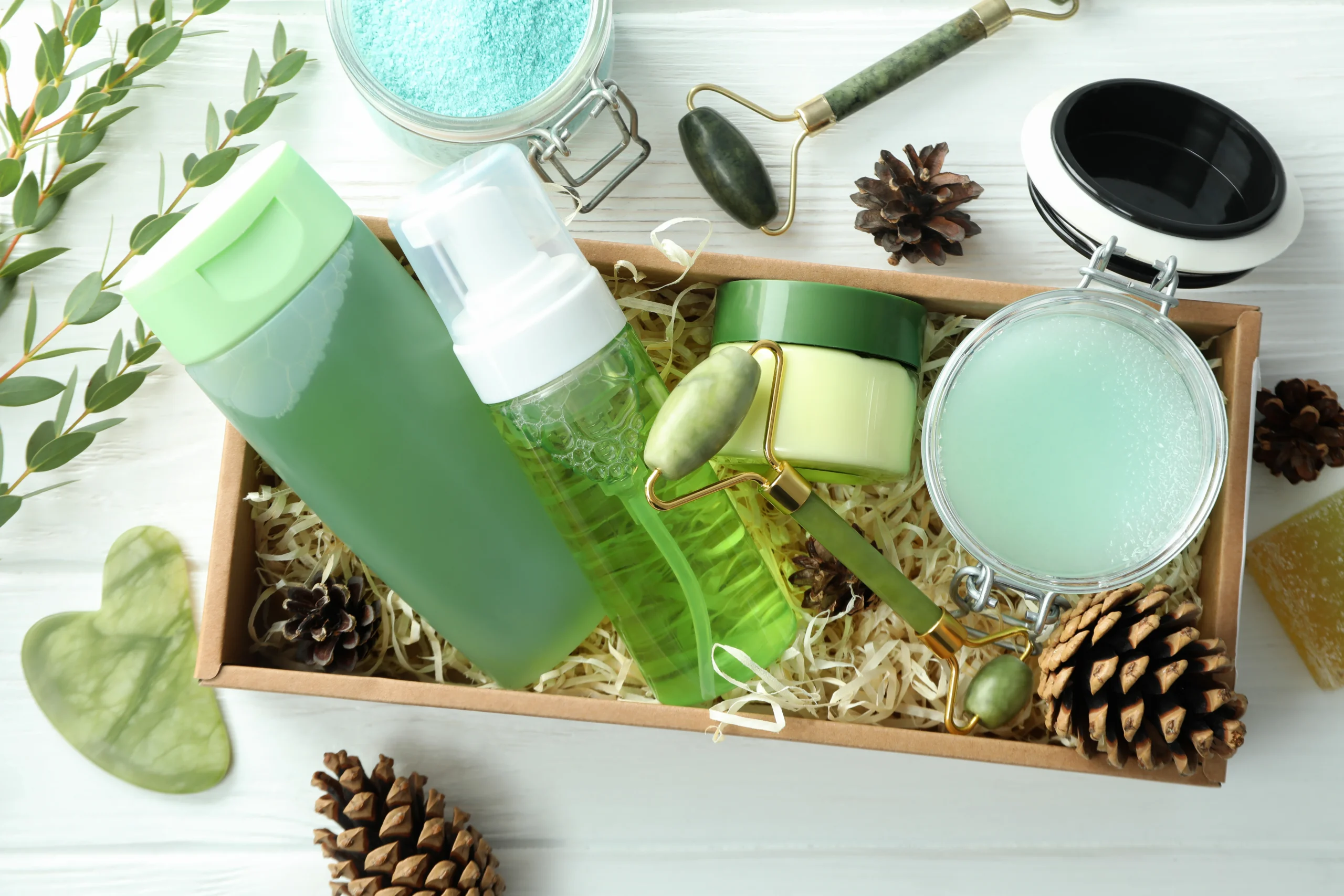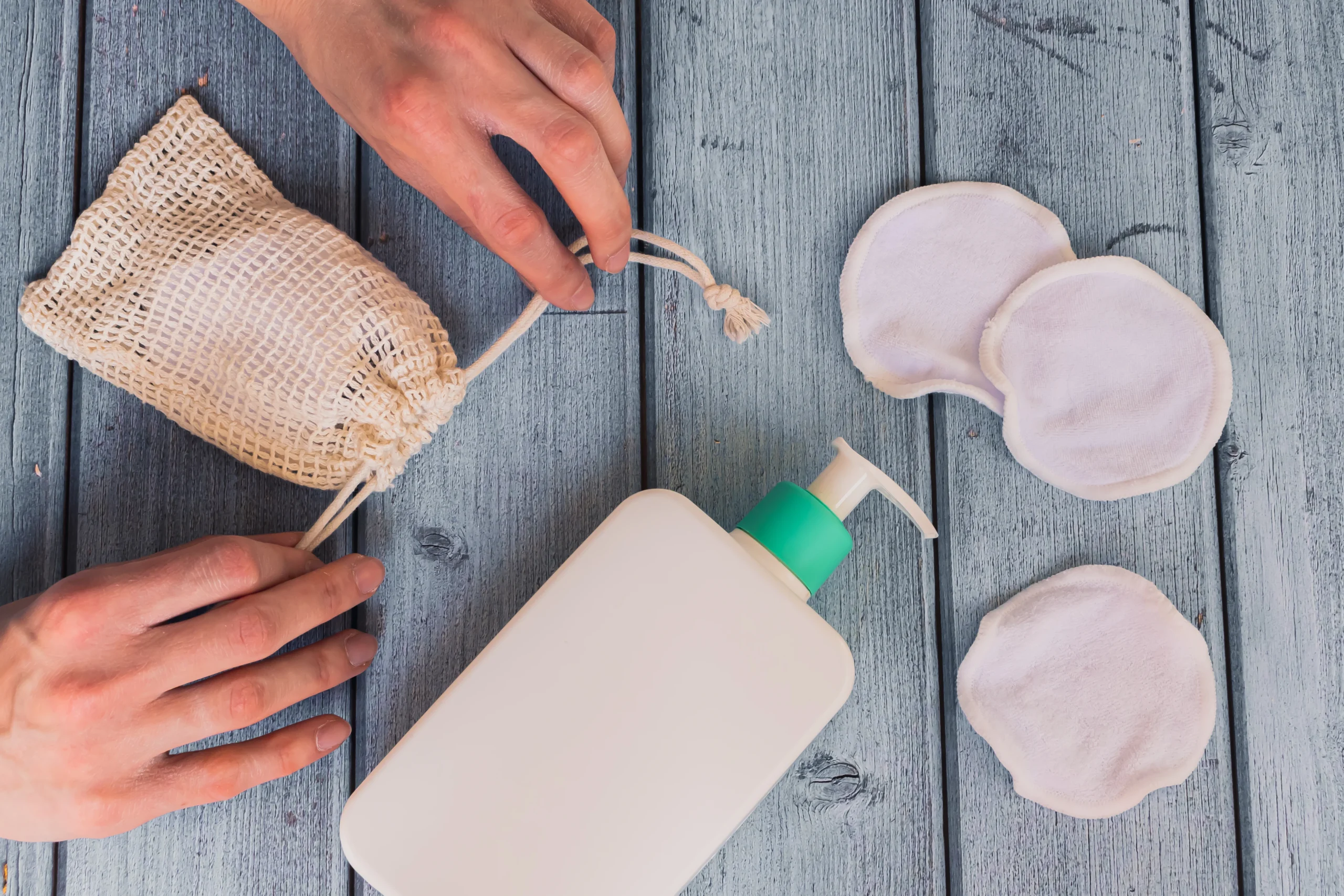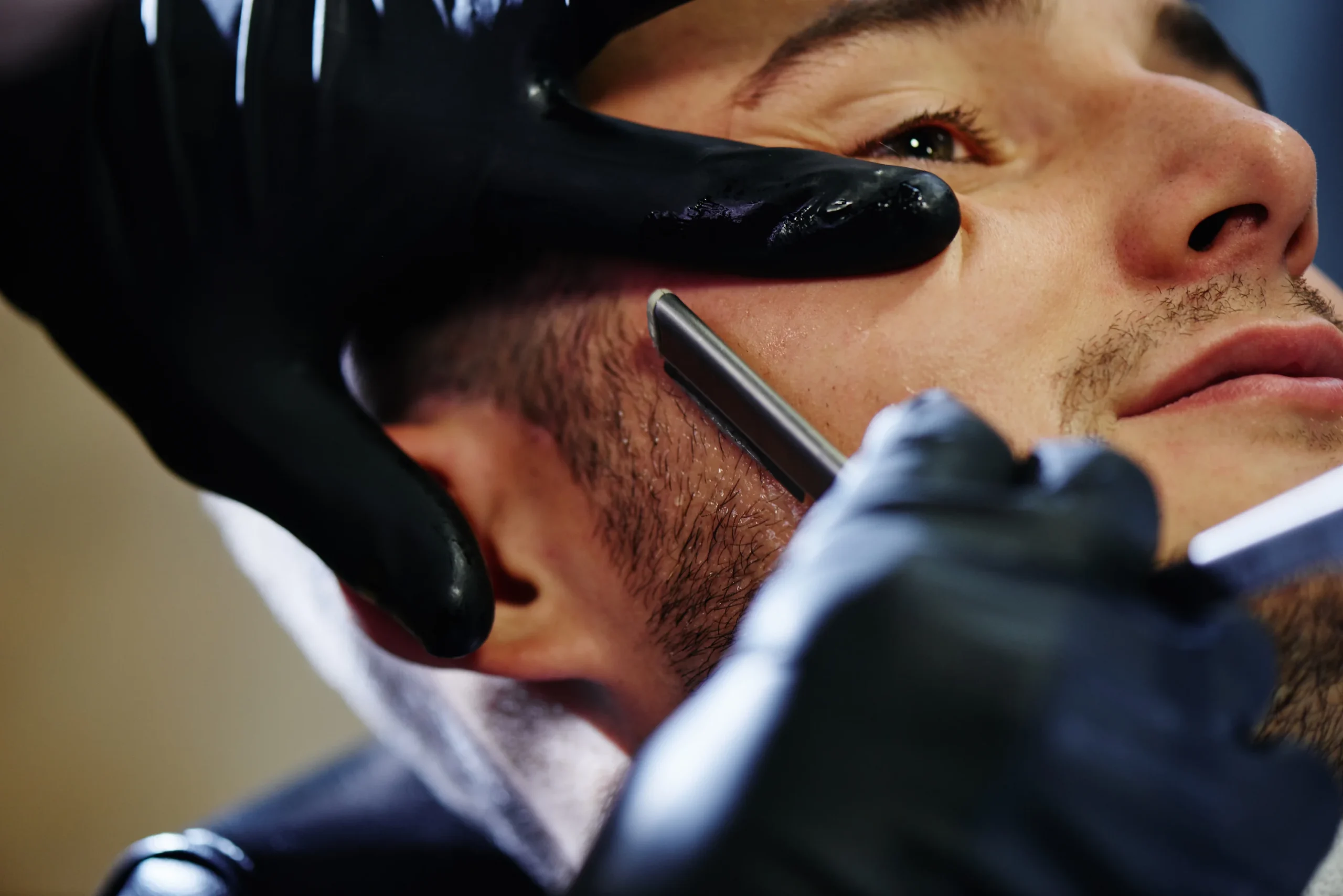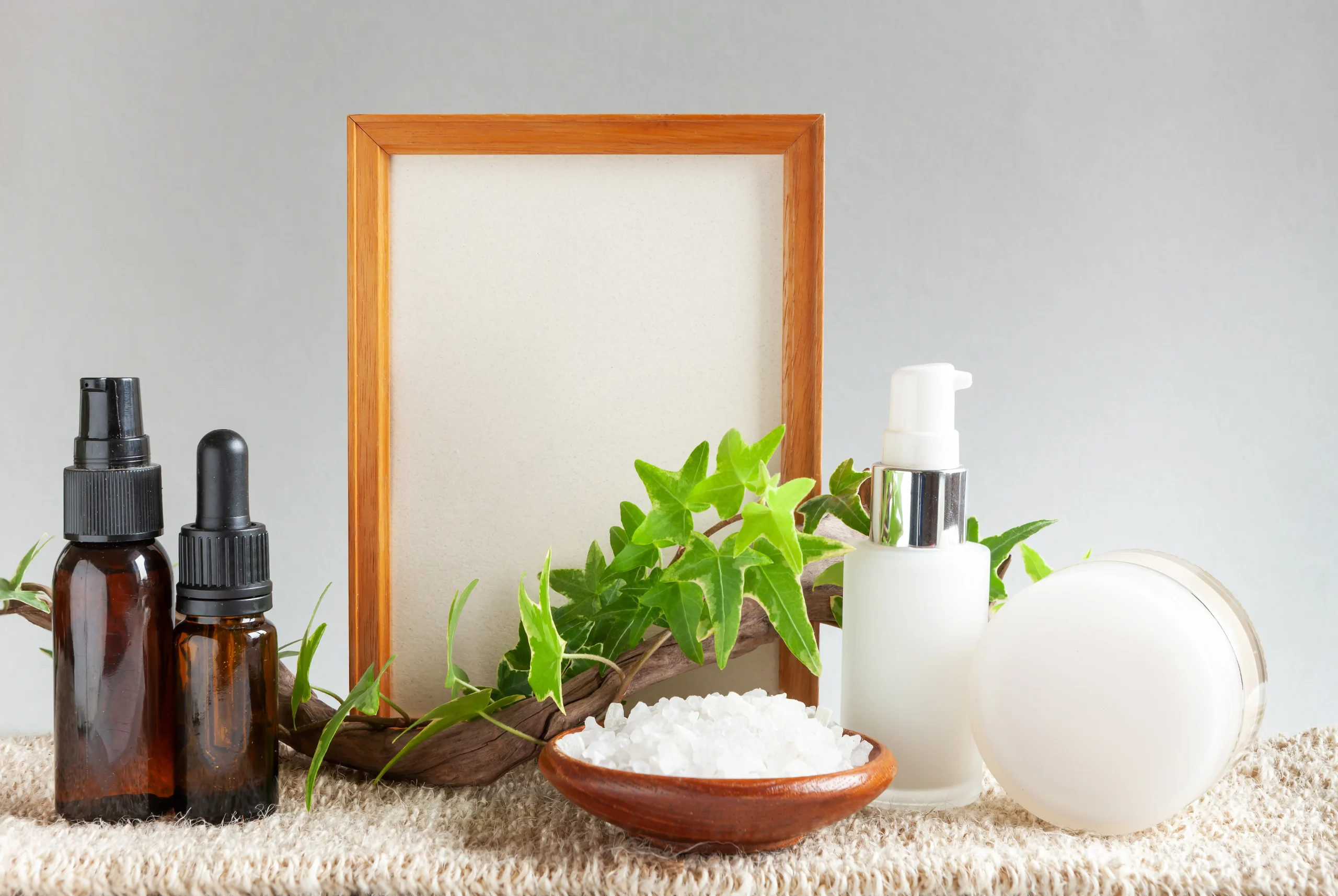Introduction To Hand And Foot Care Tips In Winter
Hand and foot care tips in winter aren’t just a seasonal beauty guide-they’re a survival guide for your skin, especially during the harshest months of the year. When temperatures drop and the air loses its natural moisture, your skin can suffer from various problems, including dryness, irritation, and painful cracks. The delicate skin on your hands and the often-neglected soles of your feet are the most affected, making you feel uncomfortable and lacking confidence. Compared to other body parts, your hands and feet are constantly exposed to the cold wind, hot house heating, or the chafing of wool socks and boots. So extra care in winter isn’t a luxury, it’s a necessity.
As winter sets in, the skin’s natural moisture barrier weakens, making it less able to retain hydration. This is where regular hand and foot care habits emerge as the most effective defense. From choosing the right moisturizer and protective clothing to using natural ingredients like oils and DIY masks, every step keeps your skin soft, supple, and healthy. Plus, these habits don’t just focus on external skin care-they also help keep your skin glowing from the inside out through nutrition, lifestyle, and habits. Imagine your hands in the spring, soft and smooth, and your feet cracked and soft. This transformation starts with small but powerful winter habits.
This guide will cover all aspects of hand and foot care tips in winter, including dermatologist recommendations, natural solutions, and simple lifestyle habits. Whether you’re dealing with mild dryness or painful cracks, these tips will help protect and heal your skin. By the end of this comprehensive article, your hands and feet will have healthy, radiant skin ready to face the cold.
Why Do Hands And Feet Get Dry In Winter?
Winter skin health can feel like a constant struggle. To win this battle, you first must understand why hands and feet suffer so much in the winter. The leading causes aren’t just the cold air; they include hidden indoor factors and daily habits. Understanding these triggers helps you realize the importance of winter hand and foot care. It shows why a straightforward solution doesn’t work everywhere.
Cold Weather And Moisture Damage
Cold air means dry air. Spending time outdoors in the winter can quickly remove moisture from your skin. The exposed areas of your hands dry out soon because they have fewer oil glands, making them more prone to cracking. Similarly, feet confined in socks and boots can suffer from temperature fluctuations and friction. This is why skin can become dry and flaky as winter sets in.
House Heating And Skin Dehydration
Interestingly, not only the cold outside, but also the heating in the house is harmful to the skin. Even with the heater on, the air in the house remains dry. This dry heat strips the skin of its natural oils, causing it to become deeply dehydrated. Your hands may feel tight and itchy, your feet may peel, or your heels may crack. Even the most expensive cream fails to provide long-lasting comfort without protective measures.
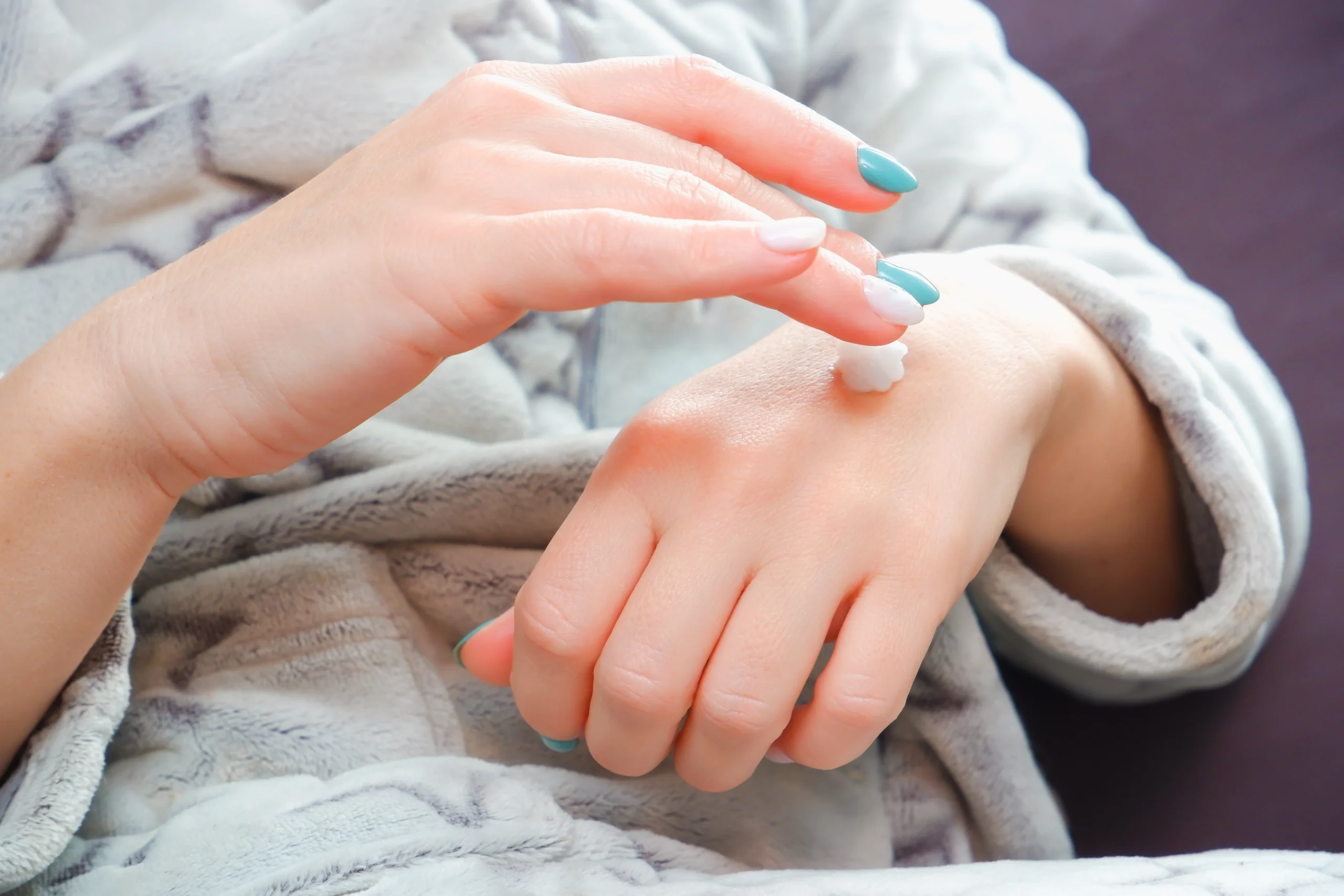
Tips For Daily Care Of Hands And Feet Tips In Winter
Hand and foot care tips in winter only work when incorporated into your daily routine. Small, regular habits produce visible results in the long run, preventing extreme dryness and painful cracks. A daily routine doesn’t have to be complicated; it must be done consciously. Choosing the right products, cleansing properly, and giving your skin a chance to recover overnight lay the foundation for skin resilience during the harsh winter.
Choosing The Right Moisturizer
The moisturizer you use is essential for hand and foot care in winter. Regular lotions dry out quickly, and your skin starts feeling dry within hours. Winter skin needs creams, balms, or ointments rich in emollients, which create a protective layer and retain moisture. Ingredients like shea butter, cocoa butter, glycerin, and ceramides protect the skin’s moisture.
Hands damaged by cold and frequent washing can benefit from deep moisture with a fast-absorbing cream. Keep a cream in your bag, next to a sink, and on a nightstand so you never miss an application. A heavy balm or petroleum jelly-based product worn overnight with socks works wonders for feet. This simple yet effective method transforms cracked heels into soft skin in days.
The Importance Of Gentle Cleaning
Cleansing may seem like a basic step, but it becomes a delicate act in the winter. Harsh soaps strip away natural oils, making skin drier and more irritated. Use a mild, moisturizing cleanser that maintains the skin’s pH balance. Look for products that are sulfate-free or contain moisturizing ingredients like aloe vera and chamomile.
An important aspect of winter hand and foot care is adjusting the water temperature. Warm water may feel comfortable after a cold day, but it quickly dehydrates the skin. Lukewarm (mildly warm) water is much gentler on hands and feet. After cleansing, gently pat dry with a soft towel, avoiding rubbing the skin, as rubbing can increase irritation. The best rule of thumb is to apply moisturizer immediately after washing. At the same time, the skin should still be slightly damp to help retain maximum moisture.
Nighttime Curative Care
Your skin repairs itself at night, so it’s the best time to take deep care of your hands and feet in the winter. Apply a thick, nourishing cream or balm before bed and wear cotton socks or gloves to lock in moisture. This creates a mini spa treatment that works while you sleep, ensuring soft, smooth skin in the morning.
You can use an overnight treatment once or twice weekly for added benefits. A natural way is to apply a light layer of coconut or olive oil to your hands and feet and let it absorb overnight. There is also moisture. These extra steps not only heal damage, but also prevent cracks and calluses.
A nighttime routine can also help address specific issues, such as cuticle care. Massage cuticle oil around your nails to help prevent painful hangnails and strengthen nail health during the colder months. These small habits are the backbone of healthy, resilient skin when done regularly.

Care Tips To Protect Hands And Feet In Winter
Caring for your hands and feet in winter isn’t just about moisturizer and cleanliness but also protection. Prevention is always better than cure, and when you proactively protect your skin from harsh elements, you save yourself from dryness, cracking, and discomfort. Hands and feet are exposed to external stressors every day during winter, from the icy wind outside to the artificial heating in your home. Without proper protection, your skin’s immune system quickly weakens. Learning to protect your skin will help it stay soft, supple, and healthy all season long.
Gloves And Socks: Shields For Hand And Foot Protection
Gloves and socks aren’t just winter fashion-they’re the first line of defense for your hands and feet. Wearing gloves is essential to protect your hands from the quick evaporation from your skin. Choose insulated gloves with soft fabric to reduce chafing and keep your hands warm. If your daily chores include washing dishes or cleaning the house, always use waterproof gloves, as prolonged exposure to water and detergents dries out your skin quickly.
Socks are also essential for the feet. Wool or cotton socks act as a protective layer, keeping feet warm and allowing them to breathe. Avoid synthetic materials, as the combination of sweat and moisture can lead to fungal infections. Wearing socks with a thick foot cream or balm at night creates a healing environment, turning even ordinary sleep into a restorative treatment. Such protective habits are easily overlooked, but they are among the most effective tips for hand and foot care in winter.
Moisture And Nourishment From Within
No matter how many creams you use, external care is incomplete without internal nourishment. Skin health is deeply related to hydration and nutrition, so diet is integral to hand and foot care in winter. Cold weather reduces your natural thirst, causing you to drink less water your body needs. This silent dehydration is reflected in your skin, which becomes tight and flaky. Drink hot herbal tea or lemon water, or keep a thermos of hot water nearby.
Nutrition is equally powerful. Omega-3 fatty acids in fish, flaxseed, and walnuts strengthen the skin’s lipid barrier, locking in moisture. Foods rich in vitamins E and C, like avocado, citrus fruits, and spinach, promote skin healing and elasticity. By eating a diet rich in these nutrients, your skin becomes more resilient to the drying effects of winter. Think of it as nourishing your skin from the inside out—an essential but often overlooked step.
Avoiding Harsh Chemicals
Another critical but often overlooked aspect of hand and foot care in winter is staying away from harsh chemicals. Household cleaners, detergents, and some beauty products can strip the skin’s protective layer, causing cracks and irritation. Choose fragrance-free, hypoallergenic products, which are less likely to cause dryness or allergies. Always wear gloves when using cleaning agents, no matter how quick the job is.
For feet, avoid overly strong exfoliants or chemical peels in the winter. While exfoliation is necessary to remove dead skin, over-rubbing or using strong acids can strip away essential oils, further increasing dryness. Combining gentle, natural scrubs and nourishing balms will keep feet smooth and not strip away natural defenses. Protecting your skin means making conscious decisions-when to protect, when to moisturize, and when to keep it simple.

Natural Ways To Care For Hands And Feet In Winter
People have been taking care of their skin with natural remedies for centuries, and they offer excellent results when it comes to winter hand and foot care without the risk of using harsh chemicals. Many natural household ingredients are rich in vitamins and fatty acids and restore softness. Unlike synthetic products that only provide surface moisture, natural remedies penetrate deep into the skin, providing long-lasting comfort and keeping the skin healthy and radiant.
Oils And Butters For Deep Nourishment
One of the most effective tips for hand and foot care in winter is to use natural oils and butters. Coconut oil, rich in antimicrobial and moisturizing properties, is a favorite for cracked heels and dry cuticles. Olive oil, full of antioxidants, strengthens the skin barrier and softens rough areas. Almond oil, rich in vitamin E, nourishes brittle nails and dry fingers.
Shea and cocoa butter are thick products that create a protective layer and lock in moisture for hours. Massage a small amount into hands and feet before bed, wear cotton socks or gloves, and wake up to smooth, revitalized skin. These oils and butters moisturize and improve blood circulation through massage, making them a complete solution for winter care.
DIY Masks And Scrubs
Easy DIY masks and scrubs are also very beneficial for hand and foot care in winter. Dead skin cells reduce the effectiveness of moisturizers, so gentle exfoliation is essential. A natural scrub made with sugar and honey removes dry skin and adds moisture. Mix a few drops of honey with yogurt for a soothing mask and apply to hands and feet for 15 minutes. The lactic acid in yogurt gently exfoliates, and the honey retains moisture.
Another nourishing mask is a combination of mashed avocado and olive oil. This vitamin-rich blend deeply moisturizes and restores elasticity, perfect for preventing cracked and rough skin. For callus-prone feet, a paste of oatmeal and milk is surprisingly effective in softening hard skin. These DIY remedies give spa-like results with little effort and turn your home into a skin-healing center.
Herbal And Ayurvedic Methods
Herbal and ayurvedic methods have provided practical solutions for winter dryness since ancient times, which are invaluable for hand and foot care. Neem oil, rich in antibacterial and antifungal properties, is excellent for healing cracked heels and preventing infections. Aloe vera gel, derived directly from the plant, reduces irritation and itching and provides intense moisture.
Ayurvedic practices suggest warm oil massage, or “abhyanga,” which uses sesame oil to improve circulation and deeply nourish the skin. Using oil with herbs like turmeric or basil can increase healing, reduce inflammation, and make the skin smoother. Simple methods like soaking your feet in warm water mixed with Epsom salts can soften the skin and reduce stress, showing how natural remedies work on the body and mind.
Incorporating these natural remedies into your routine combines ancient wisdom with modern skincare. They are safe, affordable, and sustainable, making them an excellent choice for achieving healthy, glowing skin in the winter.
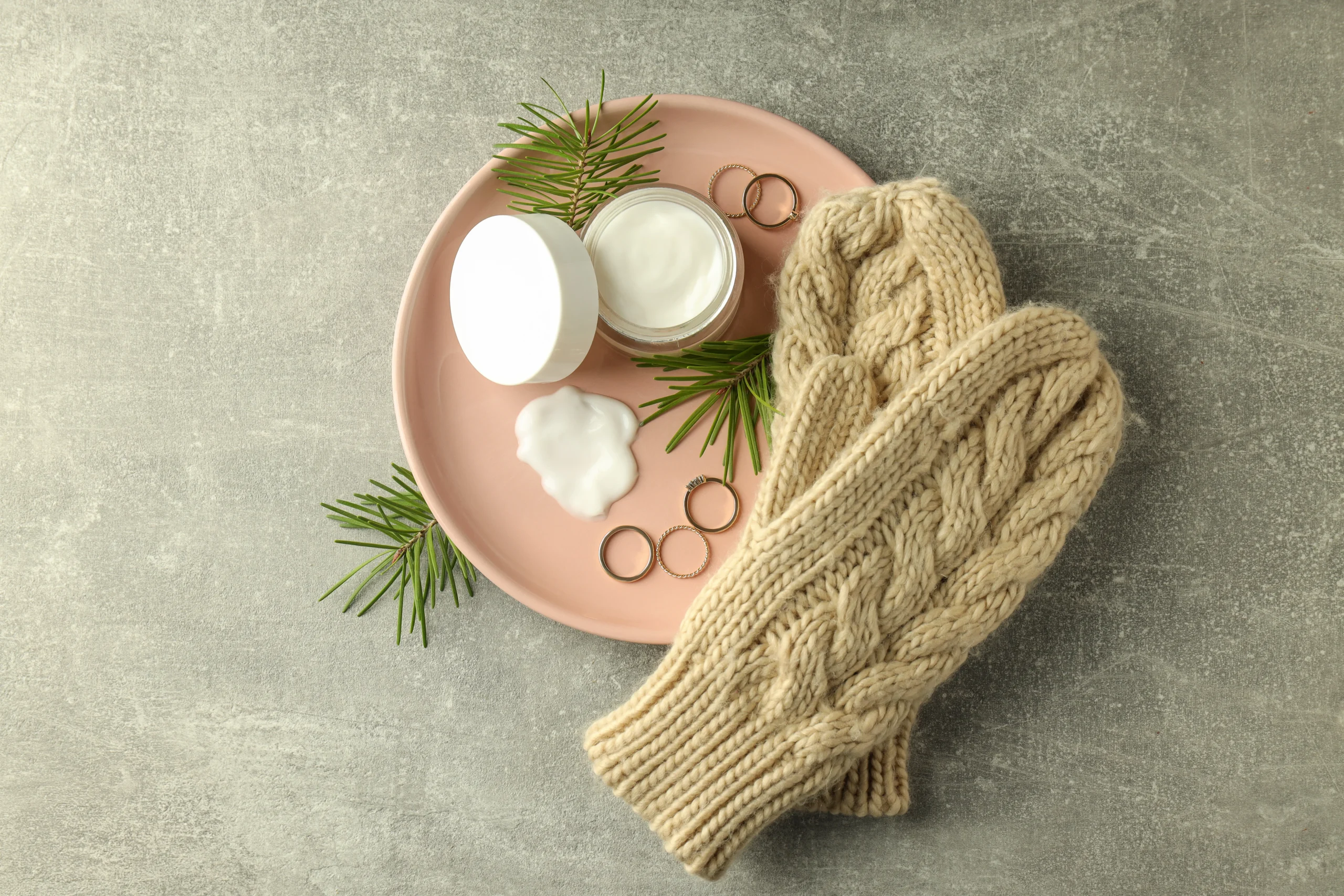
Lifestyle Changes For Healthy Skin
Regarding hand and foot care in winter, the mind usually turns to creams, oils, and external remedies. While these are important, lifestyle habits are equally important in maintaining healthy, resilient skin. The body is an interconnected system; what you eat, how physically active you are, and how you deal with stress are all reflected in the skin. Winter slows us down, leading to heavier meals, less movement, and longer time spent indoors. But with a few conscious changes, you can counteract these effects and nourish your hands and feet from within.
Balanced Diet For Glowing Skin
Your skin is the largest organ in your body, and it stays vibrant with a nutrient-rich diet. A balanced diet is one of winter’s most overlooked hand and foot care tips. Instead of relying solely on external moisturizers, focus on foods that strengthen the skin barrier. Omega-3 fatty acids in salmon, almonds, and spinach help repair damaged cells and protect against free radical damage.
Vitamin C is a powerful nutrient that stimulates collagen production, which is essential for keeping skin smooth and elastic. Oranges, kiwis, and bell peppers are excellent sources. Don’t forget zinc, which is found in pumpkin seeds and chickpeas, and helps to heal cracked skin and cuticles faster. Including these foods in your diet will give your skin the nutrients it needs to withstand the harsh winter conditions.
Benefits Of Exercise And Blood Circulation
Habitual movement is natural medicine, and exercise can benefit winter hand and foot care. Cold weather often reduces blood circulation, resulting in less oxygen and nutrients reaching the extremities. This decreased circulation is responsible for dryness, dullness, and slow crack healing. Regular exercise, whether yoga, brisk walking, or indoor workouts, improves circulation and keeps the skin healthy.
Small habits are also effective – finger extensions, wrist rotations, or ankle flexions improve blood circulation. A quick five-minute massage with nourishing oil before bed at night not only increases blood circulation but also enhances the absorption of moisturizer. Exercise doesn’t just tone the body-it also brightens the skin from within by ensuring that every cell receives nourishment and moisture.
Stress Reduction And Skin Health
Winter stress increases due to shorter days, busy holidays, or seasonal mood swings. Stress hormones like cortisol stimulate inflammation, weaken the skin barrier, and slow the healing process of cracks and wounds. So, stress management is an integral part of winter hand and foot care.
Simple practices like meditation, deep breathing, or journaling can help reduce stress and positively impact skin health. Getting enough sleep is equally important, as it’s when skin repairs itself. Create a peaceful nighttime routine- integrate relaxation techniques with skincare if possible—so you wake up with rejuvenated skin and a clear mind. When stress is under control, your skin looks healthy, smooth, and resilient.
Although the lifestyle change may not seem as immediate as applying a cream, its effects are profound and long-lasting. It creates a foundation supporting other skincare habits, ensuring your hands and feet stay nourished and beautiful throughout the harshest winter months.
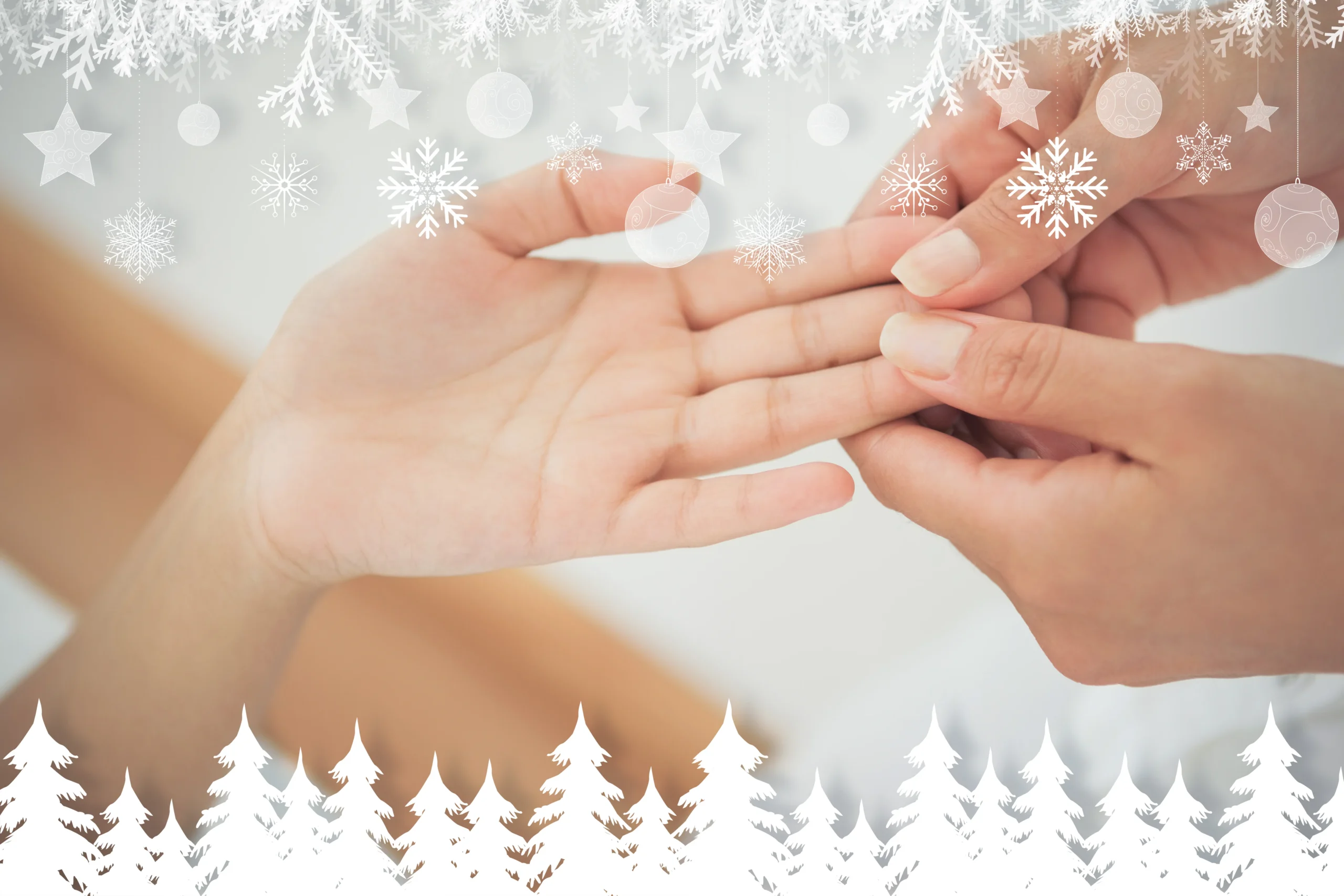
Common Mistakes In Winter Hand And Foot Care
Despite the best intentions, many people unknowingly damage their skin during the winter. Foot care tips are only practical if you avoid the habits that cause damage. Small mistakes like overwashing, ignoring signs of dryness, or using the wrong products can ruin all your efforts. By being aware of these common mistakes, you can prevent breakouts and make your skincare routine more effective.
Excessive Washing And Its Effects
Overwashing is one of the most common hand and foot care mistakes during the winter. With cold and flu season around the corner, people often wash their hands excessively, sometimes with strong soaps. While cleanliness is essential, overusing hot water and strong cleansers strips away the natural oils that moisturize the skin. This can leave hands feeling tight, itchy, and prone to cracking.
For feet, overwashing means long, hot showers that strip the skin of moisture or excessive rubbing to remove dryness. Instead, use lukewarm (warm) water, use a gentle cleanser, and apply moisturizer immediately after washing. Maintaining cleanliness doesn’t compromise skin health; maintaining consistency is key.
Ignoring Signs Of Damage
Another mistake is ignoring the early warning signs of a skin problem. While small cracks on the hands, rough patches on the heels, or peeling cuticles may seem minor, they can quickly worsen in the winter. Ignoring these signs can lead to painful cracks, bleeding, or infection. Many people don’t take action until the problem is severe, but prevention is much easier than a cure.
An innovative approach to winter hand and foot care quickly addresses all problems. If dryness occurs, increase your moisturizing routine. If cracks appear, use a heavy moisturizer or night treatment before they worsen. Paying attention to your skin is the difference between enjoying the winter with soft, healthy hands and feet and suffering from discomfort.
Relying On The Wrong Product
Not all skincare products are suitable for winter. Still, many people continue to use light lotions or fragranced products not made for winter. These often dry out quickly and can further irritate sensitive skin. Fragrances, alcohol, and harsh chemicals are especially harmful in winter, as they dry out the skin even more.
A common mistake with feet is using overly strong exfoliating acids or rough pumice stones, which damage the skin barrier and increase dryness. Instead, focus on gentle, nourishing care. Choose the right products-thick creams, balms, and natural oils-to make your routine effective and not damaging.
Avoiding these common mistakes will fully pay off for your efforts. Your skin will stay protected, nourished, and resilient, ensuring that your winter skincare routine is not just a routine, but a shield against the season’s challenges.
Discover More Articles On Makeup And Beauty Here
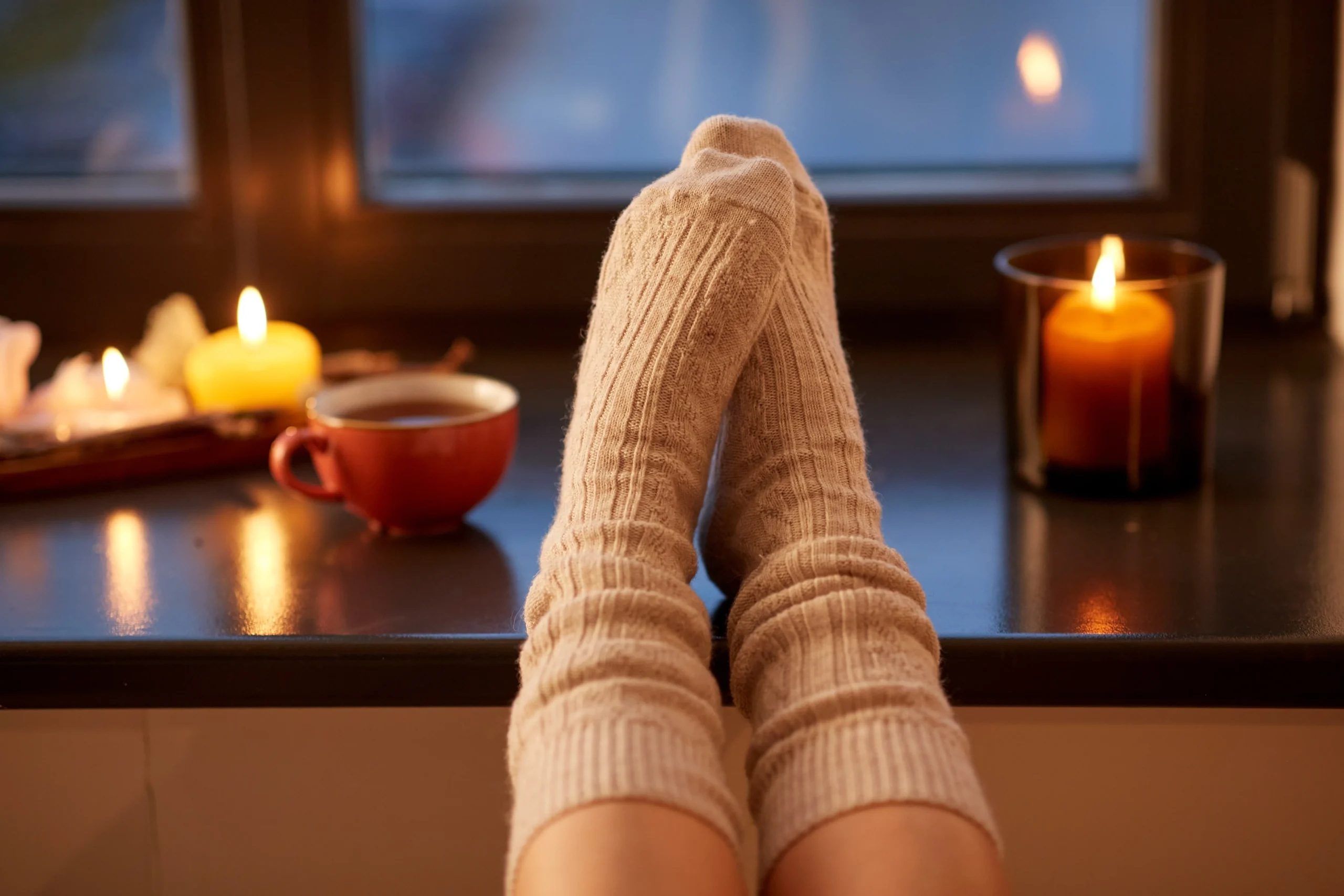
Final Thoughts Regarding Winter Hand And Foot Care
Hand and foot care tips in winter aren’t just a seasonal luxury-it’s a crucial habit that keeps your skin healthy, practical, and comfortable, even when the weather is harshest. Your hands are the most exposed part of your body, constantly exposed to cold air, repeated washing, and chemicals. At the same time, your feet often endure the friction of socks and boots. Both can quickly become dry, cracked, and painful without proper care. But it quickly becomes dry, cracked, and sore. But with a consistent routine, minor lifestyle changes, and the appropriate protective steps, your hands and feet can stay soft, smooth, and resilient all season long.
An essential lesson in winter hand and foot care is that consistency is more than complexity. It’s not about using countless products or following complicated treatments but rather about repeating simple, effective habits: moisturizing regularly, avoiding hot water, protecting with gloves and socks, and nourishing the body with a natural diet. When these steps are combined with natural remedies and a conscious lifestyle, they create a holistic approach that heals, protects, and strengthens the skin.
The keywords balance cleansing and moisturizing, internal nourishment and external care, and protection and treatment. Overwashing or scrubbing too hard is just as harmful as ignoring dry patch creams and not hydrating from within, which weakens the skin. The best hand and foot care in winter combines both methods, ensuring long-lasting results that do not fade even when the season ends.
Prevention is another key aspect. Many people wait until their skin is cracked and painful, but winter skincare is most effective when it’s started early. Think of gloves, thick creams, and might treatments as shields that protect your skin before damage occurs. Preventive care protects against discomfort and reduces the time and effort required to repair.
Finally, remember that hand and foot care isn’t just about beauty-it’s part of overall wellness. Healthy skin helps you move, work, and live, while cracks and irritation can limit daily activities. Taking the time to protect and nourish your skin is self-care, improving your comfort, confidence, and quality of life.
In short, inter hand and foot care is the key to transforming the season from a time of discomfort to a time of nourishment and rejuvenation. By following the guidelines in this article, from choosing the right moisturizer and natural remedies to making lifestyle changes and avoiding common mistakes, you can enjoy soft, radiant skin even during the coldest months of winter. Make winter care a season of joy instead of a struggle, and step into spring with hands and feet that are healthy, smooth, and radiant.
Frequently Asked Questions About Winter Hand And Foot Care
People often ask the same questions regarding keeping their skin healthy during inter. Winter hand and foot care tips can seem complicated at times. Still, once you understand the common concerns and their solutions, it becomes a detailed answer that will help you maintain soft and nourished skin throughout the season.

